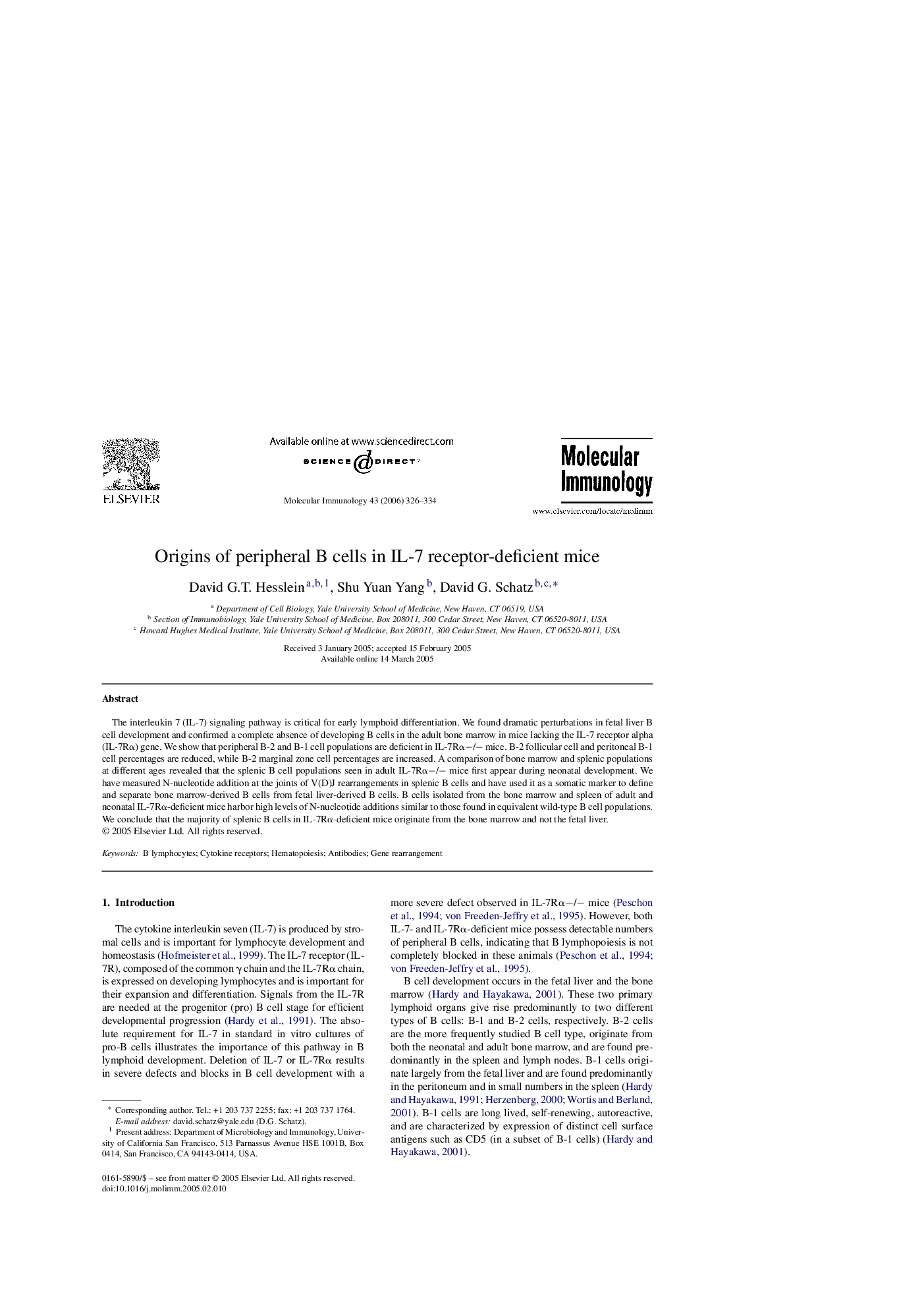| Article ID | Journal | Published Year | Pages | File Type |
|---|---|---|---|---|
| 2833423 | Molecular Immunology | 2006 | 9 Pages |
The interleukin 7 (IL-7) signaling pathway is critical for early lymphoid differentiation. We found dramatic perturbations in fetal liver B cell development and confirmed a complete absence of developing B cells in the adult bone marrow in mice lacking the IL-7 receptor alpha (IL-7Rα) gene. We show that peripheral B-2 and B-1 cell populations are deficient in IL-7Rα−/− mice. B-2 follicular cell and peritoneal B-1 cell percentages are reduced, while B-2 marginal zone cell percentages are increased. A comparison of bone marrow and splenic populations at different ages revealed that the splenic B cell populations seen in adult IL-7Rα−/− mice first appear during neonatal development. We have measured N-nucleotide addition at the joints of V(D)J rearrangements in splenic B cells and have used it as a somatic marker to define and separate bone marrow-derived B cells from fetal liver-derived B cells. B cells isolated from the bone marrow and spleen of adult and neonatal IL-7Rα-deficient mice harbor high levels of N-nucleotide additions similar to those found in equivalent wild-type B cell populations. We conclude that the majority of splenic B cells in IL-7Rα-deficient mice originate from the bone marrow and not the fetal liver.
